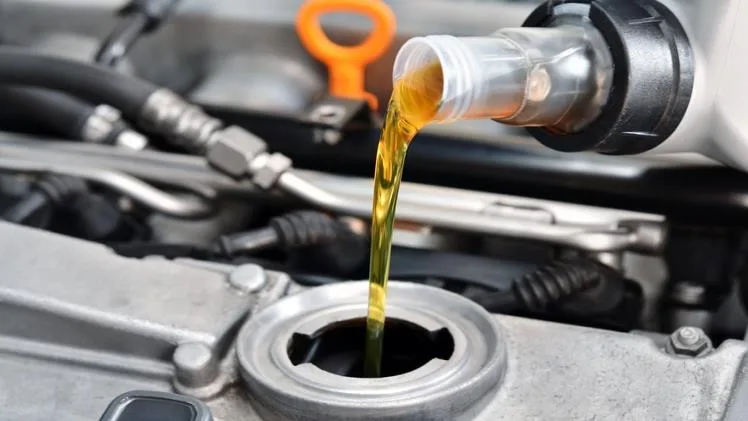When it comes to purchasing a used engine, whether for a vehicle restoration project or a replacement for your current ride, making an informed decision is crucial. The condition of the engine can significantly impact the performance, longevity, and overall satisfaction of your vehicle. In this comprehensive guide, we will walk you through seven key sections, each containing five subsections, to help you evaluate and determine the quality of a used engine before making a purchase.
· Section 1: Initial Visual Inspection
1.1 Exterior Condition
The first step in assessing the quality of a used engine is to conduct a visual inspection of its exterior. Look for signs of corrosion, rust, and oil leaks on the engine’s surface. A clean and well-maintained exterior is often indicative of proper care and maintenance.
1.2 Belt and Hose Examination
Inspect the condition of the belts and hoses connected to the engine. Cracks, fraying, or signs of wear can indicate neglect or poor maintenance. Pay particular attention to the timing belt, as its failure can lead to catastrophic engine damage.
When searching for a reliable used vehicle, it’s essential to know how to assess its quality. One of the best ways to ensure you’re getting a good deal is by visiting a trusted ram dealer near me. A reputable dealership will provide thorough inspections, offer maintenance records, and ensure the vehicle has been properly serviced, helping you make a confident purchase.
1.3 Fluid Levels and Quality
Check the oil and coolant levels in the engine. The presence of milky or discolored oil can indicate a blown head gasket or other internal issues. Also, ensure that the fluids are at the appropriate levels, as low levels might suggest a lack of proper maintenance.
1.4 Signs of Recent Cleaning or Repairs
Look for signs of recent cleaning or repairs. A recently cleaned engine might be an attempt to hide leaks or other issues. Conversely, a well-documented repair history can indicate that the engine has been properly maintained and serviced.
1.5 Correlation with Vehicle History
Consider the vehicle’s history when assessing the engine. If the car has a history of accidents or poor maintenance, there’s a higher chance that the engine could be compromised. Request maintenance records to gain a clearer picture of the engine’s past.
· Section 2: Compression and Leak Down Testing
2.1 Importance of Compression Testing
Compression testing provides valuable insights into the engine’s internal condition. Low compression levels between cylinders can indicate worn piston rings, valves, or cylinder walls, which can affect performance and fuel efficiency.
2.2 Conducting a Compression Test
To perform a compression test, remove the spark plugs and connect a compression gauge to each cylinder. Crank the engine and note the compression readings. Compare the readings between cylinders; significant variations could signal issues.
2.3 Leak Down Testing Explained
Leak down testing complements compression testing by identifying the specific areas of compression loss. It helps pinpoint whether the loss is due to worn rings, valves, or head gasket failure.
2.4 Performing a Leak Down Test
During a leak down test, pressurized air is introduced into each cylinder, while measuring the percentage of air leakage. This test provides a more detailed assessment of the engine’s internal condition than compression testing alone.
2.5 Interpreting Test Results
Interpret the compression and leak down test results carefully. A small amount of leakage is normal, but excessive leakage suggests significant issues. Consult a mechanic to help you understand the results and their implications accurately.
· Section 3: Oil Analysis and Inspection
3.1 Benefits of Oil Analysis
Oil analysis offers insights into the engine’s wear and internal condition. It can reveal the presence of contaminants, metal particles, and overall oil quality.
3.2 Collecting Oil Samples
Collect oil samples directly from the engine using a designated kit. Send the samples to a laboratory for analysis. The report will indicate any anomalies, such as high metal concentrations or contaminants.
3.3 Interpreting Oil Analysis Reports
Oil analysis reports can be complex. Look for trends over time and compare results to established benchmarks. An increase in metal particles could indicate wear, while coolant presence might suggest a leak.
3.4 Checking for Sludge Buildup
Inspect the oil filler cap and dipstick for sludge or varnish-like buildup. Excessive sludge could indicate poor maintenance or neglected oil changes, potentially affecting engine performance.
3.5 Assessing Maintenance Records
Review the vehicle’s maintenance records for consistent oil changes. Regular oil changes are vital for engine longevity. A lack of documented oil changes might suggest neglect.
· Section 4: Examination of Cooling System
4.1 Radiator and Coolant Condition
Inspect the radiator for signs of corrosion, leaks, or damage. Check the coolant’s color and consistency. Discolored or murky coolant might indicate corrosion or internal leaks.
4.2 Pressure Test the Cooling System
Perform a pressure test on the cooling system to identify leaks or weaknesses. A cooling system that can’t hold pressure may have leaks that could lead to overheating and engine damage.
4.3 Water Pump and Thermostat Inspection
Examine the water pump for leaks or play in the pulley. Test the thermostat to ensure it opens and closes as intended. A malfunctioning water pump or thermostat can cause overheating.
4.4 Heater Core and Hoses
Inspect heater core connections and hoses for leaks. A leaking heater core can lead to coolant odor inside the vehicle and fogged windows. Replace damaged hoses to prevent coolant loss.
4.5 Proper Coolant Type
Ensure the engine has been using the correct type of coolant. Mixing different coolant types can result in corrosion and reduced cooling efficiency.
· Section 5: Visualizing Engine Health
5.1 Smoke and Exhaust Inspection
Start the engine and observe the exhaust smoke. Blue smoke indicates oil burning, white smoke suggests coolant in the combustion chamber, and black smoke points to a fuel-related issue.
5.2 Listening for Unusual Noises
Listen for knocking, rattling, or tapping noises while the engine is idling and during acceleration. Unusual sounds might indicate internal damage or worn components.
5.3 Exhaust Emissions
Check the exhaust emissions for irregularities. Excessive emissions or strange odors can signify problems with the combustion process or exhaust system.
5.4 Vibration Analysis
Observe the engine for excessive vibrations. Unusual vibrations could indicate misalignment, engine mounts issues, or internal imbalances.
5.5 Engine Temperature
Monitor the engine’s temperature gauge during operation. Overheating can lead to severe engine damage. Ensure the temperature remains within the recommended range.
· Section 6: Professional Mechanic Inspection
6.1 Importance of Professional Inspection
While you can perform various tests yourself, seeking a professional mechanic’s expertise is invaluable. They have the experience and tools to perform in-depth assessments.
6.2 Choosing a Reputable Mechanic
Select a mechanic with experience in engine diagnostics and inspections. Check reviews and ask for recommendations to ensure you’re making the right choice.
6.3 Comprehensive Engine Checkup
A professional mechanic will perform a comprehensive inspection, including computer diagnostics, visual assessments, and specialized tests. They can provide a detailed report on the engine’s condition.
6.4 Identifying Hidden Issues
Experienced mechanics can identify hidden issues that might not be apparent during visual inspections. Their insights can prevent costly surprises down the road.
6.5 Negotiation and Decision-Making
Based on the mechanic’s assessment, negotiate the price with the seller if necessary. If the issues found are too severe, consider whether the engine is still a viable option or if you should look for alternatives.
· Section 7: Document Verification and History Check
7.1 Verify Engine Identification
Confirm that the engine’s identification numbers match the vehicle’s documentation. Mismatched numbers could indicate potential legal or reliability issues.
7.2 Request Maintenance and Repair Records
Ask for the engine’s maintenance and repair history. A well-documented history indicates proper care, while gaps might indicate a lack of maintenance.
7.3 Vehicle Accident History
Check the vehicle’s accident history through resources like Carfax or AutoCheck. An accident history could point to possible hidden damage or compromised engine performance.
7.4 Odometer Verification
Ensure the engine’s odometer reading matches the vehicle’s overall mileage. An odometer discrepancy might indicate tampering or fraudulent activity.
7.5 Consider Warranty Options
If available, explore warranty options for the used engine. Some sellers offer limited warranties, providing additional peace of mind regarding the engine’s quality.
· Conclusion
In the realm of used engines, thorough evaluation is key to avoiding potential pitfalls. Each of the seven sections in this guide provides a comprehensive framework for assessing the quality of a used engine. From initial visual inspections to professional mechanic assessments, understanding the engine’s condition can save you from future headaches and ensure a satisfying and reliable driving experience. Remember, patience and diligence during the evaluation process can lead to a used engine that performs admirably for years to come. For more information, check out Cash Cars Buyer!



